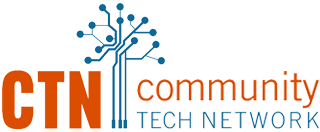Last month I pointed out all the different ways in which people define the term digital literacy and talked about how most of the discussion only scratches the surface. I thought it might be helpful to take a step back and try, on a high level, to describe all the different parts of the digital literacy puzzle.
ACCESS
Having access to technology is at the foundation of building digital literacy. Access includes what we normally think of — having the devices and broadband connectivity — but it goes well beyond that.
Our discussion of access has to include making the devices and tools with everyone in mind. Many technology tools (and the standards that guide their use) are designed in ways that limit (even eliminate) their utility to people with disabilities and seniors. It’s not just the physical devices themselves either, but how they are used, and it’s true even for those of us who are dedicated to this issue. A perfect example was my last blog post, which, it was pointed out, was very difficult for someone who is vision-impaired to read. Check out the Web Content Accessibility Guidelines from W3C and see if you can find all the ways it wasn’t. It changed how I see the web
Also, having a “device” doesn’t in and of itself equate to access. I heard a story about a youth in the East Bay who was getting ready to go to community college, and while he had access to a device at home, that device was his phone. The school, of course, would be able to give him access to a computer, but between working and attending class, the only time he really would have for homework and papers was at home. It doesn’t take much to recognize how difficult his path through school would be if he’s trying to type papers on his phone.
UNDERSTANDING
As surprising as it is, there are still a great number of people who lack basic understanding of how to use technology. One only has to spend a little bit of time in the centers in which CTN is working to see that reality very clearly. Much of my last post was centered around the “why” of this, so I won’t spend a lot of time going through it here.
DIGITAL FLUENCY
A great article that came out recently in the Deccan Hearald describes the idea of digital fluency. It describes digital fluency as:
The ability to independently repurpose the use of a piece of available technology in order to meet one’s shifting needs. The latter is integral in creating life-long learners, and is indisputably a worthwhile product of education.
At a volunteer meeting recently, one of our volunteers described what this looks like perfectly. She described how when she first started working with CTN, she had no idea how to use any computer. Through CTN’s training, and her volunteer work with other seniors, she not only built skill in using a specific tool, but a greater understanding of the underlying concepts of how technology works. “Now it doesn’t matter what (device) they bring in … they all kind of work the same.”
DIGITAL EQUITY
Access to the tools is important, as is comfort with, and skill in, using them. In the end, those components, while critical, are often not enough to reach the impact that we want to have — improving the quality of life for those we serve. As technology becomes more of a ubiquitous part of our everyday lives, digital equity becomes more of a crucial piece of the digital literacy puzzle. In an article called “Closing the Digital Divide” on the Huffington Post, Kim Gomez does a better job than I could in describing digital equity.
An equity orientation, however, focuses attention on increasing awareness, amongst all members of the population, that information is available, where the information exists, and how to navigate websites to find information when it is needed. An equity orientation aims to encourage public, private, and nonprofit organizations to make information more user-accessible, online. Additionally, with respect to increasing user skills and knowledge about how to locate and use information, online, an equity orientation goes beyond a one-time how-to experience to deep and regularly occurring opportunities for people to use technology in meaningful ways.
It’s easy to miss just how detrimental digital equity is, but there are real-world consequences that stem from it. The recent incident at the Mission Playground that I wrote about a few months ago is a perfect example of what those consequences can look like.
As CTN grows and evolves, we are committed to addressing each of the pieces of the puzzle. Whether providing services directly addressing one of these needs, or working with all of our amazing partners, we’re moving closer and closer to having a continuum of service that can provide our clients with true digital literacy.


Comments are closed.